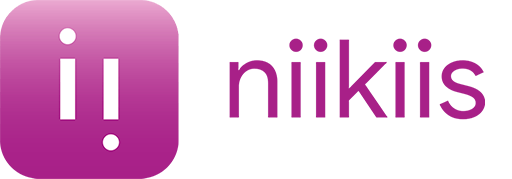This 2020 pandemic has had a profound impact on the world of work and has altered it to levels that would have been difficult to imagine just a few months ago. With large numbers of people working remotely through virtual offices, we are now faced with new challenges, such as the need to hire new remote employees and re-engage those already working for the company.
Follow these 3 tips to successfully recruit new employees and improve productivity and retention rates.
1. Make newcomers feel at home and comfortable with their remote equipment.
Joining a new company that does not have an office and has moved to remote working can be a mixed bag: you may feel excited about the opportunity and worried about performing well in this new environment. In addition to sharing the company's guidelines and policies and providing all the necessary information and training on its systems and tools, the focus should be on how to introduce the new employee to the company's culture. Culture helps to integrate new employees into the community and develop a stronger sense of belonging, which in turn influences organisational change. In addition, promoting work environments based on open communication generates numerous benefits, such as connecting and engaging teams, increasing collaboration and creating a good working environment, which is the foundation of any high-performing team.
A COUPLE OF TIPS:
- Organise a welcome video call with other staff members and take a virtual tour of the office. If you want, you can also ask new employees to record themselves on video to briefly share some personal details, from their hobbies to their favourite restaurants; in turn, other colleagues could do the same.
- Provide newcomers with a mentor/colleague to answer their questions and doubts about the company in an informal and approachable way. Makingsuch a buddy available to themincreases the satisfaction of new employees. And the mentor/companion time we provide will help them to integrate properly into their new working environment.
THE FIGURES SPEAK FOR THEMSELVES:
Creating highly productive and engaged teams, as well as fostering trusting environments and company culture makes employees 74% less stressed, 106% more dynamic and 76% more committed to their work. In addition, they are 50% more productive and take 13% fewer sick days. Not to mention that 29% are more satisfied with their lives and 40% are less exhausted.
2. Clearly communicate expectations and objectives, and provide or receive feedback on an ongoing basis.
Make sure, from the outset, that new employees have a 100% understanding of the company's objectives, as well as their own goals and how these influence the overall goals. In addition, to do this successfully, managers must be extremely involved in the on-boarding process, building trust through constant two-way communication.
A COUPLE OF TIPS:
- Hold weekly one-on-one meetings (about 30-45 minutes) to discuss each other's roles and responsibilities, get to know the new employee better, as well as their expectations and long-term goals, and share news and other current issues.
- Conduct bi-monthly check-ups to review their progress and identify any problems. These checks should cover four simple questions: what went well in the last period, what the employee should improve on, what they should focus on in the next period and how you can help them. You can also share a final evaluation, with a score from 1 to 5, of the new employee's performance over the last period.
THE FIGURES SPEAK FOR THEMSELVES:
95% of employees admitted in a survey that they were unaware of the company's overall strategy, which is one of the main causes of disengagement and lack of recognition. Another study found that 80% of people who quit their jobs do so because they do not feel valued. Yet 68% of HR managers said that celebrating talent is an excellent way to make newcomers feel appreciated in their work.
3. Provides effective training
New employees must learn the company's products and processes, how tools and software work, and where to find the organisation's repository, among many other things. Keep in mind that newcomers acquire new skills more effectively when they experience and reflect on the learning process ("learning by doing"). So offer newcomers a continuous training programme according to their needs and skills, and don't forget to evaluate their on-boarding progress. You should test their knowledge and keep track of their talents, either to identify their best skills or those competencies that can be improved.
A COUPLE OF TIPS:
1. Use short videos, apply microlearning principles and create a working day so that all content is spread out over time, even before day 1, so that new employees learn at their own pace during their induction. Don't forget to track their progress.
2. Create an ongoing feedback loop on the company's performance in relation to the onboarding process and other essential activities such as training. To do this, you can use a simple form for the first 90 days that allows for scoring on a scale of 1 to 5. To judge the value of each microlearning asset, ask two questions, one to assess the quality of the content and the other to assess how useful and relevant it has been to the employee.
THE FIGURES SPEAK FOR THEMSELVES:
There is a lot of interesting data explaining the importance of training, one of them, Linkedin's 2020 "On-the-Job Learning Report," which shows that 94% of employees said they would work longer at a company if it invested in teaching, while an article in the Huffington Post reported that companies could improve their profit margins by as much as 24% if they invested in training.
Employee performance is critical to business success, hence employees are the backbone of any successful company. That's why giving them an exceptional start and responding to their needs is critical. According to Gallup, when the onboarding process is outstanding, newcomers are likely to feel twice as prepared to meet whatever challenges the new company throws at them.
In the end, conducting an onboarding remotely effectively is all about giving newcomers the best possible experience. Intuitive HR platforms like niikiis can help you facilitate remote work, strengthening interactions between employees, between employees and managers, and even between employees and companies, so that your team achieves goals, is engaged and involved. Sign up here to create a free account. This 2020 has made onboarding go digital: don't get left behind!


 Employee database
Employee database  Documents and e-signature
Documents and e-signature  Reporting and analytics
Reporting and analytics  Payroll and incidents
Payroll and incidents  Time and Attendance Software
Time and Attendance Software  Shifts and task list
Shifts and task list  Absences & time-off
Absences & time-off  Workflows
Workflows  Expense management
Expense management  Recruitment and selection software
Recruitment and selection software  Onboarding
Onboarding  Training and procedures
Training and procedures  Internal communication
Internal communication  Performance assessment software
Performance assessment software  HR surveys and forms
HR surveys and forms  Chatbot
Chatbot 